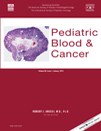Progressive transformation of germinal centers in children and adolescents: An intriguing cause of lymphadenopathy†
Conflict of interest: Nothing to declare.
Abstract
Background
The clinical implications of a diagnosis of progressive transformation of germinal centers (PTGC) in children are not well known.
Methods
To better understand this entity, we conducted a retrospective review of all patients aged 0–18 years diagnosed with PTGC at our center between 1998 and 2010.
Results
Twenty-nine patients were identified. Median age at diagnosis was 11.5 years, and median duration of follow-up was 2.8 years. Thirteen patients (45%) had a single episode of PTGC with no other associated features. Five patients (17%) had recurrent PTGC. Four patients (14%) had PTGC associated with Hodgkin lymphoma (HL): one preceding, two concurrent, and one subsequently developed HL. The most commonly associated HL was nodular lymphocyte-predominant HL. Seven patients (24%) had PTGC associated with immune disorders, including lupus, Castleman disease, and probable autoimmune lymphoproliferative syndrome. Overall, 15 patients (52%) had more than one lymph node biopsy. The cumulative incidence of a second biopsy after a diagnosis of PTGC was 42.3% ± 12.2% at 4 years. PTGC was PET-avid in all four patients tested.
Conclusions
PTGC is a nonspecific manifestation of a variety of associated conditions. There is a small risk of subsequent HL, and a larger risk of requiring multiple biopsies for recurrent PTGC. The presence of an immune disorder should be considered in patients who present with generalized lymphadenopathy, splenomegaly, immune cytopenias, and/or progression to HL. Routine surveillance imaging may not be required. Future research should determine the optimal surveillance strategy for patients with PTGC and the indications for repeat biopsies. Pediatr Blood Cancer 2013; 60: 26–30. © 2012 Wiley Periodicals, Inc.




